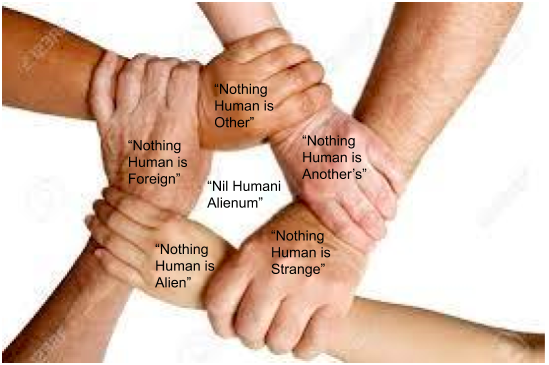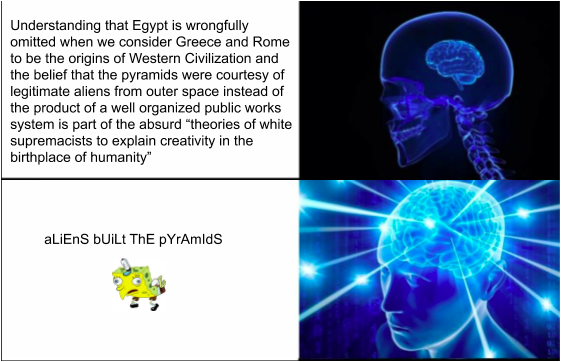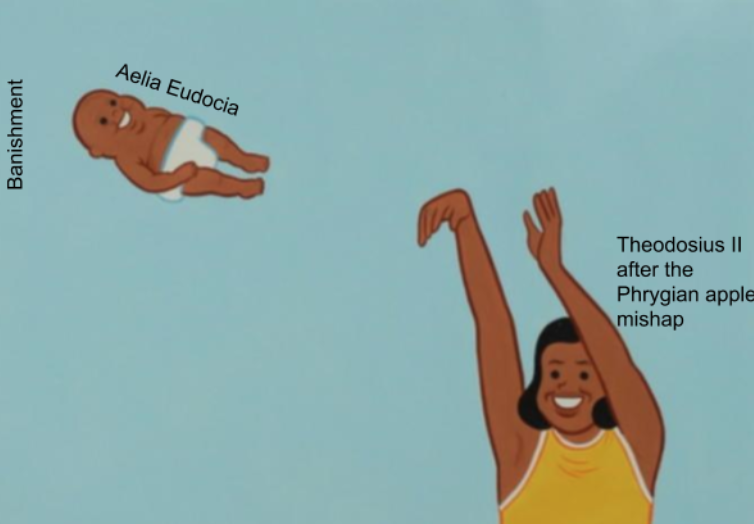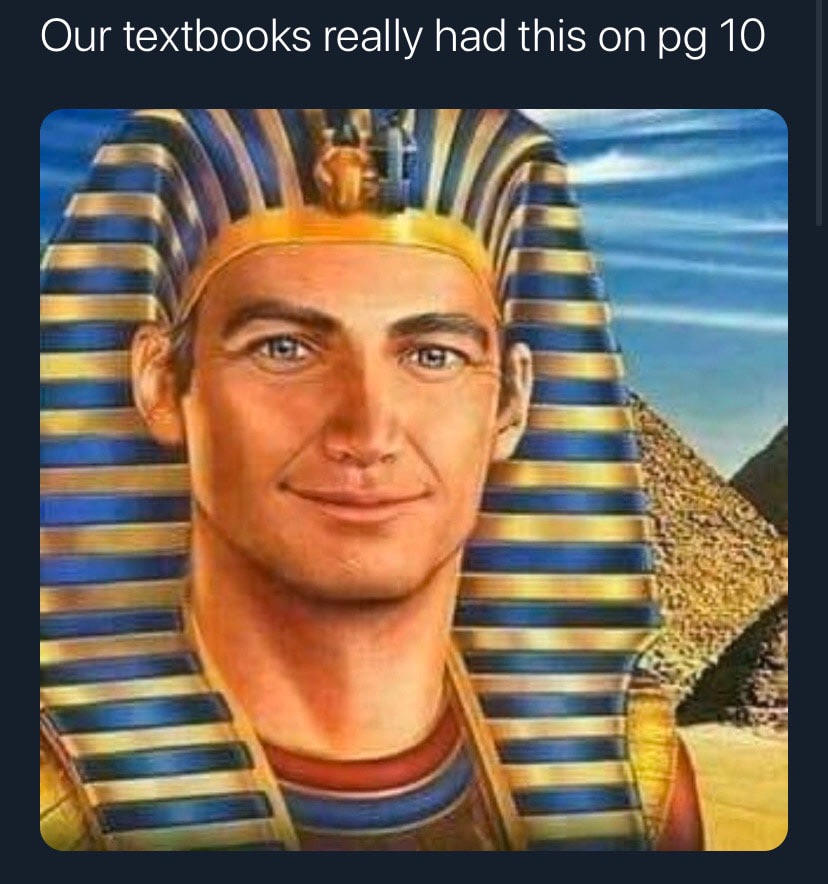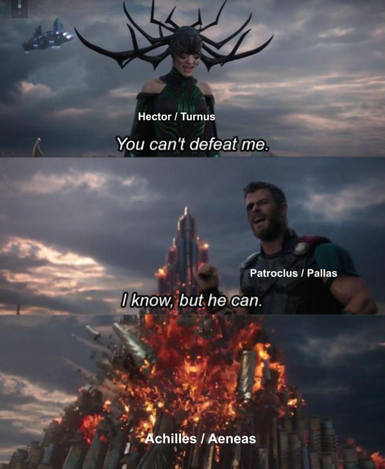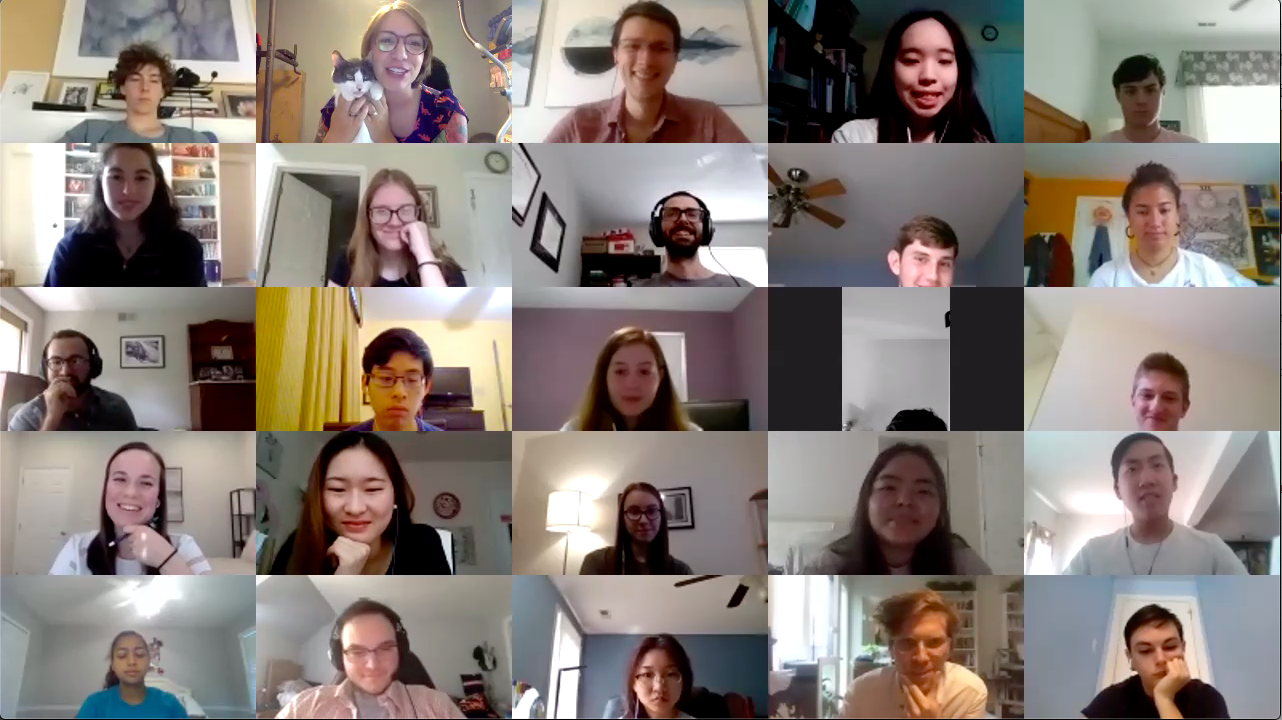|
salvete homines!
Thank you so much for an amazing and fantastic two weeks of online Latin Academy! On Friday, we had our final optional discussion session to talk about this year's theme nil humani alienum, after students had presented their projects and watched the theme lecture on Thursday. The discussion was well attended, interesting, and insightful (for those who could not make it, the recording is available to watch). Students who did not attend the discussion submitted amazing and wonderful written responses to the theme lecture. Some students also submitted memes, which appear below. Most students were intrigued by the different potential translations of the theme presented in the theme lecture. The translation of even a single word can make a profound difference in the interpretation of even a seemingly simple Latin phrase like our theme. Many students thought deeply about the idea that the meaning of words, both in Latin and English, is not fixed. Terms like "classical" often convey attitudes and assumptions about what qualifies as a 'classic' when a phrase like "ancient Mediterranean" would be not only more specific and accurate but also more inclusive and interesting. Some students expressed their conviction that the theme is in fact a universal statement of humanism and cosmopolitanism. Although the line occurs in a comedy, and may even be a joke, the line is written is such a way that this interpretation is not only valid and inspiring, but also may be part of what makes the joke funny. Other students observed that, while our theme could be adapted to a sentiment like "we are all equal," this interpretation might overlook the everyday inequalities of our contemporary world. Although our theme does capture the anthropological fact of our shared human ancestry, this common humanity requires that we look for and correct inequalities created and sustained by humans. In the end, these responses themselves were a great example that nil humani alienum. Thank you all so much for the opportunity of learning from you these past two weeks and in particular your interesting and insightful investigation of our very special theme. ave atque vale! magister Cavedo
0 Comments
Wow, the theme projects were PHENOMENAL! We have never done something like this before, so the staff wasn't sure what to expect. And we were blown out of the water by the amazing presentations our students created. Here are some highlights:
Terence's life animated!
A children's book about the first day of school
And a video that moved the staff members to tears
It is clear that our students put a lot of time, creativity, and thoughtfulness into these videos. We were so impressed by their presentations that we're already thinking about how to do this project at an in-person Academy!
GLA TAs SUMUS! On Tuesday, the 2020 GLA Electives went LIVE. Each TA created a lecture for the students to be able to pick which topic appealed most to them. The topics included women writers, whitewashing, and word puzzles. Academy students were encouraged to watch as many as they wanted, however were required to watch at least one. They were also given some optional engagement pieces to weigh in on some of the questions posed by the lectures. Although the engagement piece was optional, many of the students still responded and we were very impressed with the overall participation. Lexi on Ancient Women Writers responses: Students responded to questions regarding the credibility of stories written by other sources, since it is very uncommon to have any actual literature surviving today. Below are some responses regarding the story of Telesilla of Argos told to us by Pausanias: “Too often, minorities and women are only seen as 2 dimensional figures. I feel that knowing both her bravery in the scenario and her talents in the arts are necessary to showcasing the complexity and capabilities of women that were not really accepted at the time.” -awesome Latin Academy Student “I think this story is interesting because it really characterizes Telesilla as formidable andalmost masculine since she was able to defend her city better than the men in the military who were killed by the Spartan army. Her power in and of itself makes her appear more masculine; however, her strength isn’t physical, it’s more-so mental, taking on a more traditionally feminine quality. Maybe this story sets up the possibility that Sappho has the power to influence others without physical violence and that her intelligence and emotional resolve is more influential than brutality and ferocity. I think this story in some ways vaguely alludes to her talent for poetry as it shows Telesilla’s mental strength and thoughtfulness.” -terrific Latin Academy student Below are some responses regarding Aelia Eudocia, who may have been banished by her husband on claims of adultery: “To me the story sounds very apocryphal, especially considering the already notable connection in Christianity between apples and women committing grave sins that get them banished. But I think it definitely gives some insight into how women were treated and the high standards to which they were held by Christian society. Even within the story, she was essentially banished because too many people regifted an apple. Though that is supposed to be indicative of her infidelity, it is still a very large punishment for an alleged crime.” -astonishing Latin Academy student Sallie on Hollywood Whitewashing the Mediterranean responses: Whitewashing is a difficult topic to talk about for anyone, and it was so encouraging to me to hear from so many students who were willing to discuss it with me. It was hard to pick out just a few comments to share, as there were so many gems. When discussing 300: “One main thing I noticed is that the ‘good guy’ in stories like these is always white, and the ‘bad guy’ are always foreign, and often times of color. This pushes a one sided narrative that villainizes people of color, while upholding fairer people as the good guys. The Persian character is characterized as very ‘exotic’ and having a near god status, almost other-worldly. This characterization drives a sentiment of ‘otherness’ about the Persian king in comparison to the spartan character, which could have negative affects on peoples perceptions of those belonging to a similar racial/cultural group.” -wonderful Latin Academy Student When discussing Cleopatra: “The Sphinx-Bearers are clearly coded as if American slaves, performing inordinate labor for a single mistress, dressed in garb meant to humiliate, all indication of the individual removed… We are not meant to see the Sphinx-Bearers as royal servants, but we are meant to see them as slaves.” -amazing Latin Academy Student When discussing Exodus: Gods and Kings: “Another part of this is religious- we see this with white portrayals of Jesus, many of the apostles, and the Jewish people- they were from the middle East and weren’t white, but white Europeans have an easier time accepting their religious forebears as one of their own.” -incredible Latin Academy Student When discussing what to do about it: “Whitewashing is a problem because it is unfair for people of color to lose their history. Furthermore, children grow up without seeing their skin on screen or in toys, teaching them lighter skin is better. It is extremely racist and ignorant to have a white person play a role meant for a person of color. In order to help end whitewashing, we need the school system to teach children about the actual history without it glorifying white people. In addition, rolls that are meant for people of color will be casted correctly, and toys will come in different races and ethnicities.” -inspiring Latin Academy Student JP on Latin Puns, Wordplay, and Puzzles responses: Here are some of my favorite comments from students about Latin puns. “Talking about Vergil's pun on the Iliad: We had a nice lecture on how Vergil used Homer as a reference for many of his stories, but discovering this little word play made it 10x better. It was also interesting because it was like Vergil wasn’t trying to hide the fact that he was referencing Homer, as if he wasn’t concerned with being accused of plagiarizing.” -stupedous Latin Academy Student “My favorite of all the puns shown in the video was the simple “Carpe, Carpe!” pun. It reminds me very much of the experiences I had with the Latin teacher at my school... Even though I do not remember specific examples, seeing this pun (along with the Quintus one at the end, which is similar in a way, relating to the silly Roman names), sparked the memories of the many times my teacher and I would come up with puns that drew a groan out of the both of us. I am both a lover and a hater of puns, and it is one of the many reasons I fell in love with Latin; it’s even easier to find word plays within it than the stupidly complex English language.” -awe-inspiring Latin Academy Student “The apparatus criticus can further understanding of a Latin passage because it shares various ideas of text from various different people. It helps to display what others thought of the text, and can help a reader try to get a better grasp of the reading. It’s almost like a footnote, which gives different alternatives that help to support the context that the story/message was in, which can help a reader understand it from more of a modern perspective. With this, a reader can adequately read a Latin passage and make sure that they truly understand what is happening because they’re given the various ways to translate a word or phrase in the best possible way.” -magnificent Latin Academy Student Big GRATIAS to the awesome students who engaged with our lessons. Your personalities and insight make this online academy feel like an in-person academy, and we couldn’t be more grateful for that. We are excited to see the students’ theme projects in the coming days to cap off a wonderful academy. Ex animis, Your TAs 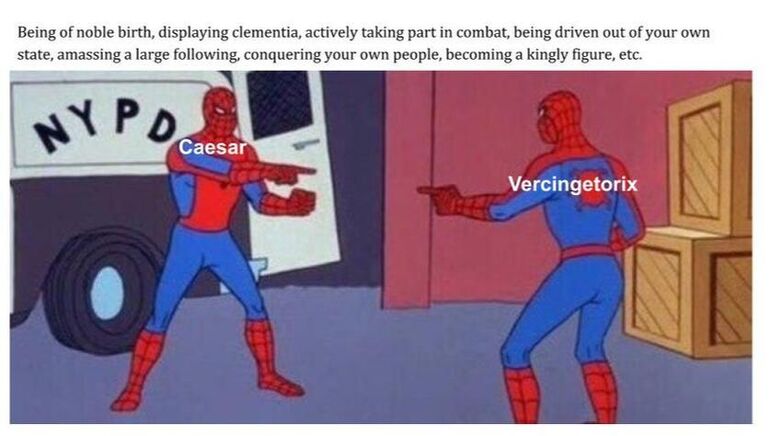 A Splendid Meme from a Splendid Human A Splendid Meme from a Splendid Human Salvete omnes! O tempora, o mores! What a time to be in Latin Academy. With so much going on in our world, I have truly enjoyed the chance to work with those who will have a hand in shaping a better tomorrow, our wonderful students. They continue to impress me with their thoughtful responses in group discussions as well as their detailed written work and even the occasional engaging video or meme. On Monday, my lesson “I’m the Bad Guy...Duh(!?)” hit the airwaves. In this lesson, I presented students with three different authors and discussed how each of them characterized the “villains” in their respective literary works. I highlighted Caesar’s depiction of Vercingetorix, his famous Gallic rival, in the Commentarii de Bello Gallico, Sallust’s depiction of Catiline, the author of an infamous conspiracy to seize control of the Roman Republic, in the Bellum Catilinae and finally Livy’s depiction of Hannibal, the notorious Carthaginian general, in Ab Urbe Condita. I then asked students to consider each author’s intent behind these characterizations and what we can learn about the themes of each work from an analysis of its villain. In addition, they attempted to find connections between the different villains as well as determine what constituted a protagonist or antagonist in the eyes of the Romans. The students’ work speaks for itself as they drew some excellent conclusions from the evidence presented to them. Several students made the astute observation that each author spends time praising the Roman values of each villain. This particular student did so and included an illustrative allusion: These authors try to depict villains as those who emulate typical Roman values, but were either put in the wrong situation/went down the wrong path…it reminds me of the first circle of Hell in Dante’s Inferno where non-Christian figures like Vergil are held; they don’t receive hellish punishment because Dante admires them a lot as people, but their only sin is not being Christian. – Glorious Latin Academy Student Building off of this point, other students concluded that the differentiation between a protagonist and an antagonist truly came down to how Roman each one was, as illustrated by this response: As far as I can see, the only deciding factor of villainy for Roman authors is how Roman the villain is. Vercingetorix, while infused with the values of a noble Roman, is still Gallic, and therefore an enemy. Cataline, though Roman, is similar in action and thought to the stereotype of “Punics”, i.e. backstabbing, ambitious, unbound by oaths. Hannibal, though enduring of body, is still ultimately Punic, and therein lies his villainy. – Brilliant Latin Academy Student Taking all this into consideration, one student reflected on their realization that all these authors were focused on highlighting qualities that are inherently Roman: It’s interesting to think that there are always going to be traces of each writer’s experiences, emotions, and lives in their work that we sometimes don’t even notice because they’re disguised into the plot so masterfully. – Outstanding Latin Academy Student Every author has bias and students were able to pick up on the fact that these Roman historians are no exception. They viewed both protagonists and antagonists through a Roman lens and evaluated their characters based on their relationship with Rome and whether or not their values aligned with those of an ideal Roman. Each author operated from their own perspective as a Roman and brought out characteristics within their respective “villains” that were familiar to them. In the end, to quote our Latin Academy motto, “nil humani alienum.” Also, a relevant meme created by our resident Latin Academy Meme Lord. I would also like to give a special shout out to all the students who attended our discussion on Tuesday! It was wonderful to speak with everyone and we covered a variety of topics including how we should look at ancient literature from the perspective of genre, cultural stereotypes employed by the Romans as well as the literary careers and reception of Caesar, Sallust and Livy. Maximas gratias discipulis ago!!! It has been a delight to work with all of our students this summer and I am very much looking forward to the theme project presentations on Thursday. Valete, Magister Cogan 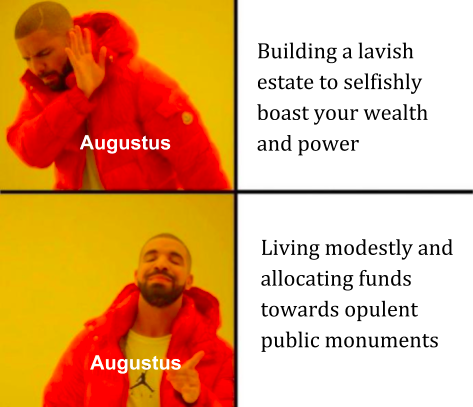 -Superb Latin academy student -Superb Latin academy student Salvete omnes! Happy second week of Latin Academy! We had an awesome first week! I felt very lucky to have the opportunity to meet all of our students at the introductory meeting, to attend a few discussion sections from other teachers’ classes, and to read responses from students following my own class. Although it looks a little different this year, our Latin Academy has still fostered deep thinking, thoughtful and respectful discussion, and a sense of academic community, all surrounding many aspects of the ancient world, and all made possible by the amazing and fantastic students who make up our academy. I have been so impressed with the intellect and eagerness of our students! On Thursday, my lesson, “Monimenta Romana” went live for students to watch and respond to. The lesson presented an introduction of how Roman leaders, specifically the first Roman Emperor, Augustus, used architecture to present information to the Roman public. After viewing this information, I asked students to think further about what the intended messages said about the Roman people, who exactly these messages were directed towards, and what might make one monument more effective in communicating than another. During this lesson, students spent time exploring and analyzing Roman history, traditions, and values. A common theme in written responses regarding Augustus’ image construction via monuments was balance. The passages below, borrowed from student responses, provide a glimpse of this discussion: “Augustus was sly in his construction of the Mausoleum; while it was evident that the monument was a product of Augustus’s wealth and power (and subsequent dedication to Rome), its simple design and somewhat nostalgic aesthetic made him seem like a man of the people. He proved himself a capable powerhead as well as a virtuous Roman citizen through the building of the Mausoleum.” - Amazing Latin Academy student “The way in which many of the monuments were planned and designed shows that status and tradition were both very important to the Romans. There had to be a very delicate blend between an emperor showcasing his wealth--and thus the wealth of the nation--and being modest in order to show that he would rather spend his money on things to help everybody. Augustus’s house, for example, is quite plain compared to what we might expect an emperor to live in. ...However, the monuments and buildings established during an emperor’s time still had to be grand and beautiful enough to show that the country was thriving and powerful.” - Fantastic Latin Academy student “These temples represent very different aspects of Roman life in the different gods that they represent. Mars Ultor, Mars the Avenger, otherwise known as the god of war represents Rome’s vast military power and conquest. War as a means of expansion would prove to be very important to Augustus and Rome in the age of the Empire. Mars Ultor is in stark contrast to Apollo, the god of healing, music, poetry, and knowledge and beauty. This temple represents the creative aspects of Rome. It represents the domestic rather than the foreign conquest of Rome. It pays respects to all the poets, philosophers and important thinkers that have lived throughout Roman history.” - Wonderful Latin Academy student With all of this discussion of balance, many students came to the conclusion that Augustus, as well as Roman leaders before and after him, spent much time and effort constructing their image for the public. They had to make many careful choices to keep the people’s opinions of them perfectly balanced, as is expertly expressed in yet another student-created Latin Academy meme: In our live discussion on Friday, we pushed beyond talking about the messages meant to be conveyed by Augustus’ monuments, to who his audience might have been. Our conversation focused on how different groups of people in the city might have perceived the monuments, from Roman senators to visitors or enslaved workers from recently conquered provinces. In addition to considering mixed messages from the monuments themselves, we also examined some of the literature presented in the lesson, and what biases may be present there too. We concluded this conversation with a riveting mini-lesson on Nero’s Domus Aurea, presented by Magister Cavedo. If you have a moment and were not present for the live discussion, consider checking out the recording! (Reminder - the discussion recordings are posted in the Google Classroom assignment for each class). To our awesome students, thank you all for your continued engagement in the Latin Academy lessons and activities. I am looking forward to seeing you in discussions this week, and ESPECIALLY looking forward to seeing your theme projects! Valete! Magistra Miller On Wednesday, we turned to epic poetry with Homer's Iliad and Vergil's Aeneid - and more importantly, the intertextual references that Vergil makes to Homer. Many students responded to some discussion questions in writing or video, and several students attended the live discussion on Thursday. We first explored the powers - and powerlessness - of the gods in key scenes from Iliad 16. We found that Zeus decided to hold himself back from acting, but that Apollo played a rather active role. Many students also chose to think deeply about the pity we feel for both Sarpedon and Patroclus. One student put it this way: Since Zeus didn't save him, "the reader feels badly for Sarpedon since even his own father wouldn’t save him from death. We feel pitiful for Patroclus because he was killed by the man that his friend Achilles told him to avoid." We then jumped to Vergil's pro-Roman Aeneid, reading scenes from book 10. Many students found Turnus to be a ruthless character, compared to a lion and taunting Pallas. Other students looked to the emotional impact of Jupiter's conversation with Hercules. One student wrote: "There’s the intense emotion that Hercules is feeling, his desire to help Pallas but his inability to do so, that lends a sense of helplessness to the entire thing. ... Though the reader could never have really helped anything, this whole conversation ... creates a haunting image of a young boy who everyone wanted to help but no one could." As wee outlined the ways that Vergil made explicit references to Iliad 16, one student put together this meme: We then asked, "but why?!" Some students pointed to the heroism of Aeneas as he resembles Achilles. Others saw differences the gods between the Iliad than in the Aeneid, and one student noted this:
"As much as Trojans' losses were, their victories were largely credited to the humans who had succeeded without as much divine intervention. Again, in the symbolic difference between Achilles’ armor and Pallas’, the gods are more present and involved in the former’s battles while the victories of the Trojans are wholly the strength of the humans (and Romans, eventually)." Our discussion session even thought about undertones of civil war in the way that these humans were fighting each other - and looked specifically at Pallas' sword-belt with the scene of the Danaids as a symbol of intra-familial strife. We entertained the idea that perhaps Vergil paints a less-than-rosy image of Aeneas' war in Italy, and of Augustus' rise to power. Thank you for an engaging discussion, both through your writing and over Zoom. It was wonderful to hear all of your thoughts! I can't wait to see where the coming days take us! -- Mr. Jefferson 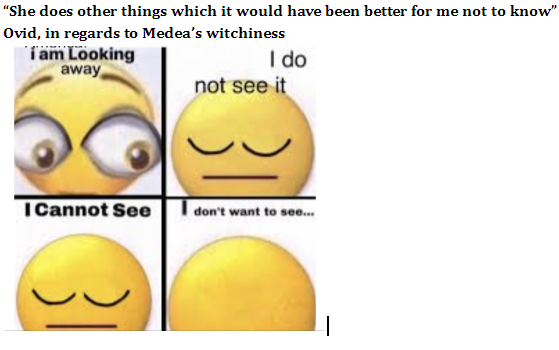 Hey folks, Magister Gallagher here! On Tuesday, my lecture on magical women in the ancient world went live. As will be the case for all of the lectures from here on out, students either wrote responses to the lecture, recorded a video response, or attended a live discussion section. I wanted to take a minute to do a bit of a retrospective and talk about some student responses now that everyone has had a chance to engage with the material. One of the things that came up again and again during student responses was how simplistic our modern witch seems to be in comparison to the ancient witch. "Caricature" was a term I very frequently used in my responses, but I really liked when a student described our modern view on witches as monolithic. The ancient witch existed on a far broader spectrum than our purely fictional modern witch, making the Roman witch far more complex and nuanced as a whole. Many students were quite surprised by the horrific things ancient witches did, and as we all know, Ovid himself was quite shocked by ancient witches. One student was kind enough to put together this beautiful image: The witch in some ways doesn't quite fit in with the normal patriarchal society that is Rome, so we spent a considerable amount of time discussing gender roles in the ancient world and the "otherness" or "foreignness" of these magical women. I'd like to cap things off with a quote from a student response: "For example, if a witch were to make sacrifices and potions of blood and sing incantations in order to harm other humans or their livelihoods, then it would make sense to view them as alien to “normal” society (nil humani alienum connection)" From the very first assignment, it appears that people already are giving serious thought to the theme of our academy this year, and I look forward to seeing the group presentations on the themes next week! Every year, the Latin Academy staff chooses a theme around which all of our activities are centered. The mos maiorum of the in-person Academy has been that we have a theme lecture early on in the Academy during which a staff member explains the ancient context of the theme, ways it has been used throughout history, and how it can be applied to our own lives both during and after Academy. Since this year's Academy is different, we're doing the theme differently! Today, students divided up into groups of five to research and discuss this year's theme: nil humani alienum. Over the course of the next two weeks, they will come up with their own interpretation of the theme and present it to the Academy at the end of the second week. Some of the groups are focusing on comparing the ancient context of the theme to modern interpretations. Others are interested in the possible ways the theme can be translated depending on context. Still others are focusing on the theme's relevance to present day issues. Students are also already coming up with creative ways to present their group's interpretation, such as a children's book, a video skit, and a rap to Vivaldi played by group members. This is an experience that is totally unique to GLA MMXX and the students are already rising to the occasion! Staff members are very excited to see what they come up with! Today was the first day of the first ever online Latin Academy! All 45 students and all 9 staff members got on Zoom to meet each other for the first time. The meeting began with a speech from Princeps going over the program. It was interrupted quite often by meowing from her cat, Squeaks!
Students and staff then broke up into groups to introduce themselves by playing the classic game 2 Truths and a Lie. Some favorites from the game include one student whose lie was that he earned 8 language credits at his school. It's a lie because he actually earned 10! Another student shared that they have won a watermelon eating contest, but are also allergic to watermelon. Yet another student shared that he was once covered by approximately a million ticks and he survived! For the rest of the day today, students will begin preliminary research into this year's theme "nil humani alienum" before getting into their theme project groups tomorrow. It was so wonderful to meet everyone today! salvete homines This is an introduction to the theme lecture for this summer's Latin Academy theme: nil humani alienum. This summer, the Theme Lecture will be the final event of Academy. As a result, by the time you hear my thoughts you will have already spent a considerable amount of time in contemplation on the meaning of our theme. I look forward to your reactions, and I hope you will find my Theme Lecture to be relevant not only to your own investigation in these next two weeks but also to your further reflection beyond the conclusion of this summer's Latin Academy. One of the most interesting challenges we face each summer is the translation and interpretation of our theme. Although Latin all-stars like you all are able to comprehend the Latin with little difficulty, the urge to settle on an English translation often discourages us from the possibility of multiple interpretations of equal validity. I encourage you to consider as many interpretations (and translations) of our theme as you can, and to embrace the probability that it may be difficult to articulate a single English translation that captures the range and nuances of the original Latin. As you investigate the connections between the ancient Mediterranean world and ours, I urge you to ask "what are the attitudes and assumptions?" behind the information, images, and opinions you discover. You need neither accept nor reject every authority you encounter, but if you challenge attitudes and assumptions, most crucially your own, you might reach a new interpretation of the theme that transcends translation. And then I will guide you through a deconstruction of attitudes and assumptions related to our theme throughout history in order to illuminate what they reveal about our humanity. In the meantime, if you need a low-key show to binge watch in your time at home this summer, I encourage you to check out Rick Steves' Europe (on his site + youtube for free, also on hulu + amazon prime). I have been watching this show the last few weeks while working on the Theme Lecture, and it has helped me reflect on our theme and broaden my perspectives while stuck at home this summer. I am so excited to meet you when Latin Academy begins tomorrow, and to share the Theme Lecture with you next week at the end of Academy. valete magister Cavedo |
Salvete!This blog will document the MMXX virtual session of the Virginia Governor's Latin Academy. |
